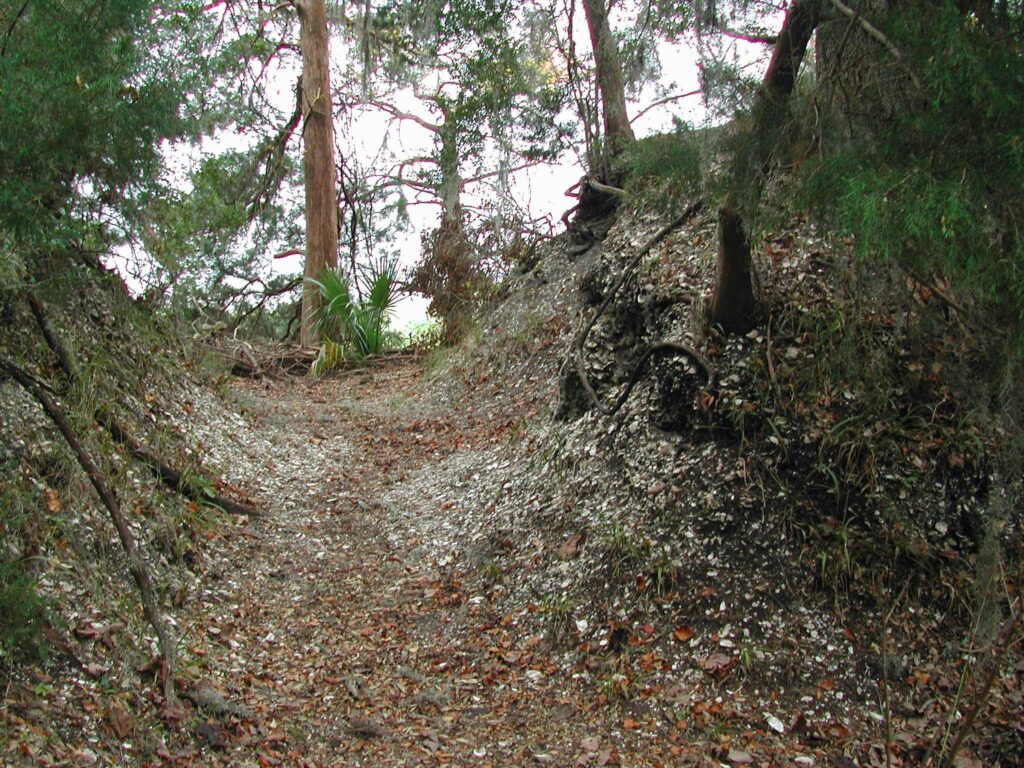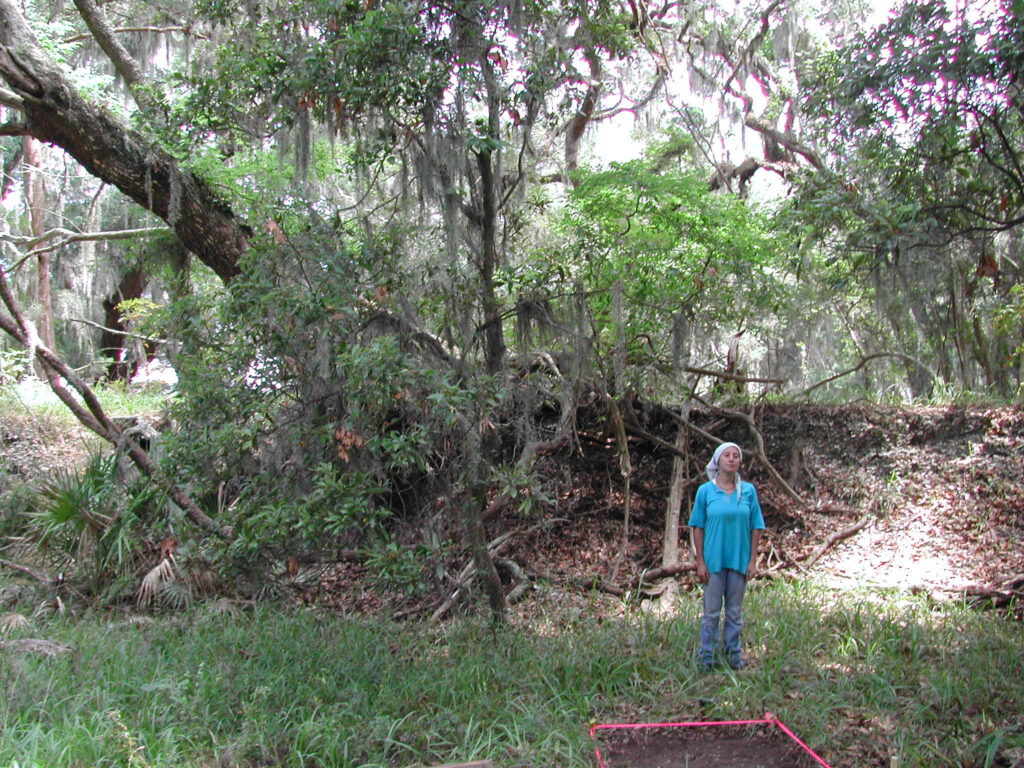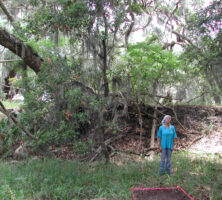Complex hunter-gatherer societies became increasingly common in the Southeast during the Late Archaic Period (5,000 to 3,000 years ago). While still providing for most of their dietary needs with wild foods, such groups also exhibited characteristics usually associated with later prehistoric agricultural populations (e.g., Mississippian societies). These characteristics include year-round occupation of sites, larger populations, emergent social differentiation (or status), monument construction (e.g., earthen or shell mounds), and the development of new technologies (e.g., pottery). Interestingly, not all complex hunter-gatherers developed these traits simultaneously. The shell rings of Georgia are the best indicator that complex hunter-gatherers were present on the coast during the Late Archaic. Yet despite more than fifty years of scientific research, we are still uncertain about the precise ways in which these communities were complex.
Shell Rings
Located along the barrier islands and coasts of Georgia, South Carolina, and Florida, shell rings (also called middens or trash heaps) are circular and semicircular deposits of shell, bone, soil, and artifacts. The largest of Georgia’s shell rings are more than nine feet high and three hundred feet in diameter. In addition, many sites have multiple shell rings in the same area. Native Americans occupying the coastal zone of Georgia created these features during the latter part of the Late Archaic Period (4,200 to 3,000 years ago). Shell (mostly oyster) makes up a major part of the rings, but also located in the middens are the remains of many different plants and animals that native groups used for food and medicine. Most of these species exist in the surrounding estuaries and maritime forests along the coast. Many of the food resources located in the estuaries, especially shellfish and various fish species like sea catfish, were reliable and plentiful. The rich coastal habitat also provided other key terrestrial resources, including deer and acorns from live oaks, to meet the daily food needs of large groups of people.

Courtesy of Victor D. Thompson
Shell Rings and Questions of Complexity
The debate continues over exactly what the shell rings imply. There are three competing interpretations. The first interpretation views the shell rings as signs of permanent villages of egalitarian groups. If this hypothesis is correct, then shell-ring populations would represent one of the earliest examples of year-round occupation in North America. The second interpretation holds that shell rings are the remains of seasonally occupied camps, where different groups came to hold ceremonies and feasts. Researchers view feasts as opportunities for some individuals to gain status and power, which eventually led to greater social differences. According to this model, shell rings developed because of the intentional mounding or piling up of feasting remains. The third interpretation suggests that shell rings represent both the locations of ceremonies and feasts and the sites of year-round villages.
Shell Ring Research in Georgia
Archaeological investigations of Georgia’s shell rings contribute to our understanding of what exactly these sites represent. Analyses of the food remains in the rings on St. Simons and Sapelo islands suggest that at least some portion of the population occupied those middens for most if not all of the year. The population size supported by these areas is still under debate, with estimates ranging from twenty people to hundreds of individuals.

Courtesy of Victor D. Thompson
Recent work on Sapelo Island suggests that shell rings may be more numerous than previously thought. Most known shell rings in the Southeast are large and rise several feet above the surrounding lowlands. By using new technologies that allow archaeologists to see beneath the ground without digging, such as ground-penetrating radar, researchers have located the remains of much smaller shell rings now buried beneath the modern ground surface. These discoveries raise the possibility that many more smaller and/or buried shell rings exist.
Excavations of smaller shell rings, like the smallest of the three known at the Sapelo Shell Ring Complex, suggest that at least some middens are the result of shell, bone, and artifact buildup beside households and are not the result of intentional mounding for ceremonial purposes. Despite these observations, it is still possible that some rings were formed through the process of ceremonial mounding. It is also possible that shell rings began as the household debris of people living in a circular village and were later intentionally mounded during ceremonies. Regardless of how shell rings formed, it is evident from the remains within the deposits that the rings served both as places of daily life and as sites for sacred ceremonies.
Significance
Shell-ring research provides insight into previously undocumented social behaviors of Native American groups, as well as into the increasing efficiency with which these groups extracted natural resources. New developments during the Late Archaic Period laid the foundations for the later, increasingly complex cultures of prehistory. Shell rings also provide important information about the adaptations of people to coastal environments as well as about the nature of those environments in the past. Such information is important not only for understanding how cultures change but also for predicting the future of such environments.








